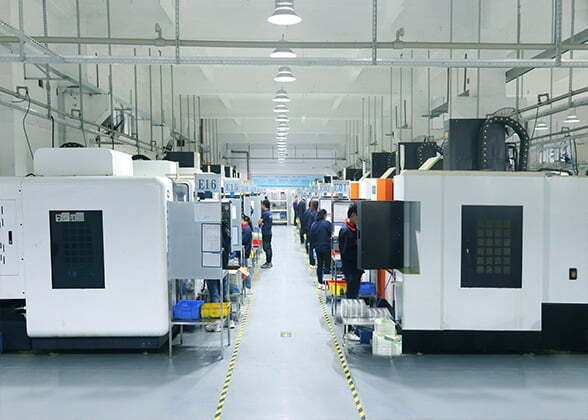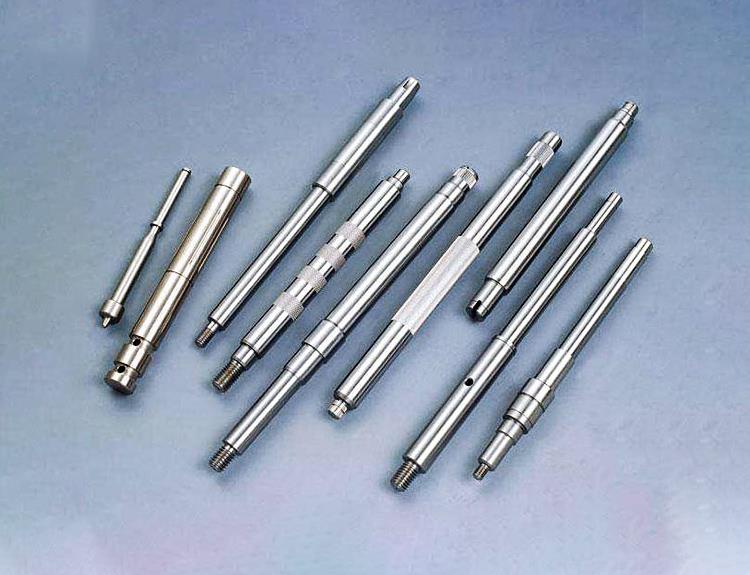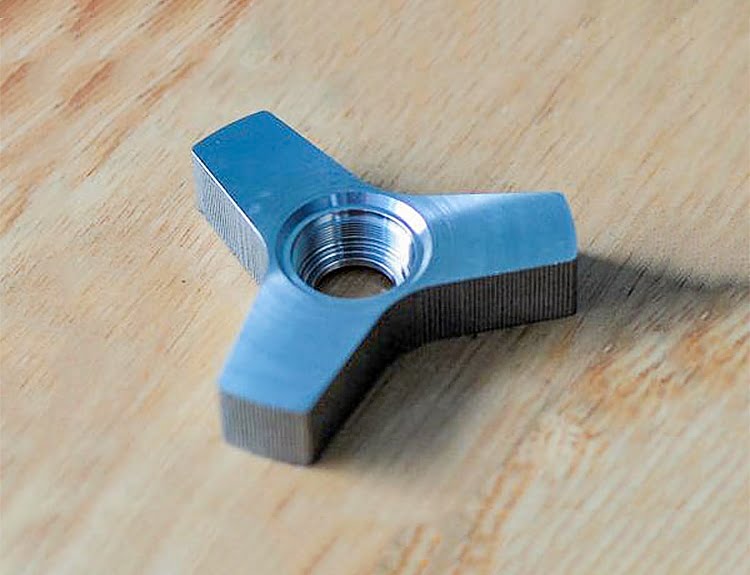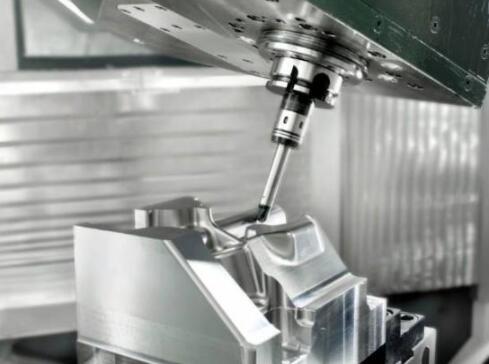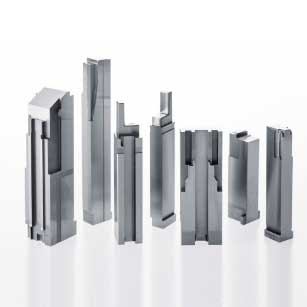Increment pulse coder
A rotary position measuring element, mounted on a motor shaft or ball screw, which emits equally spaced pulses to indicate displacement when rotating. As there is no memory element, it does not accurately represent the position of the machine. Only after the machine has been zeroed and the zero point of the machine coordinate system has been established can the position of the table or tool be indicated. When using the incremental encoder it should be noted that there are two ways of signal output: serial and parallel. Individual CNC systems have a serial and parallel interface corresponding to this.
Absolute pulse coder
A rotary position measuring element, used in the same way as an incremental encoder, with a memory element that reflects the actual position of the machine in real time. The position is not lost even when the machine is switched off, so the machine can be put into operation immediately after switching on without having to return to zero. As with the incremental encoder, care should be taken when using the serial and parallel output of the pulse signal.
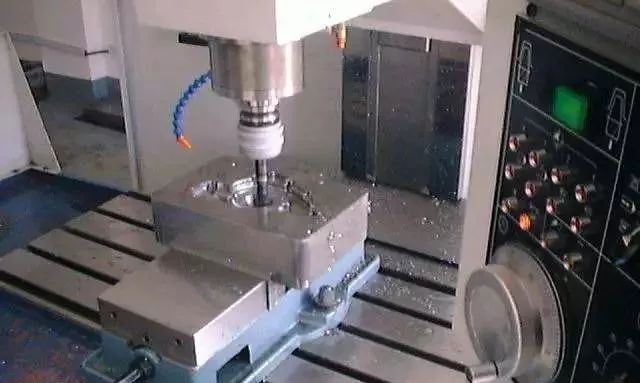
Orientation
In order to perform a spindle positioning or tool change, the machine spindle must be positioned in the circumferential direction of rotation and at a certain angle as a reference point for the action. There are generally four methods: orientation with a position encoder, orientation with a magnetic sensor, orientation with an external rotation signal (e.g. proximity switch), orientation by external mechanical means.
Tandem control
For large tables where the torque of one motor is not sufficient to drive, two motors can be used to drive in unison. One of the two axes is the active axis and the other is the driven axis. The master axis receives the control commands from the CNC and the slave axis increases the driving torque.
Rigid tapping
Instead of using a floating chuck, the tapping operation is achieved by synchronising the rotation of the spindle with the tapping feed axis. The spindle rotates at one revolution and the feed to the tapping axis is equal to the pitch of the tap, which increases accuracy and efficiency. Metalworking WeChat, good content, worthy of attention. To achieve rigid tapping, the spindle must be equipped with a position encoder (usually 1024 pulses per revolution) and requires the preparation of a corresponding ladder diagram to set the relevant system parameters.
Tool compensation memory A,B,C
The tool compensation memory is generally available with parameters set to any of type A, type B or type C. The external appearance is that type A does not distinguish between the amount of geometry compensation and the amount of wear compensation, type B separates the geometry compensation from the wear compensation and type C separates not only the geometry compensation from the wear compensation but also the tool length compensation code from the radius compensation code. The length compensation code is H and the radius compensation code is D.
DNC Operation
This is a type of automatic operation. The machining program is stored on the hard disk or floppy disk of the computer and is inputted to the CNC one section at a time.
Advanced preview control (M)
This function reads in several program segments in advance, interpolates the trajectory and pre-processes the speed and acceleration. This reduces following errors caused by acceleration, deceleration and servo lag, and allows the tool to follow the part contour of the program instruction more accurately at high speeds, resulting in improved machining accuracy. Pre-read control includes the following functions: linear acceleration and deceleration before interpolation; automatic deceleration of corners, etc.
Polar coordinate interpolation (T)
Polar coordinate programming is the transformation of a Cartesian coordinate system with two linear axes into one with the horizontal axis as the linear axis and the vertical axis as the rotary axis, using this coordinate system to program non-circular contours. This is usually used for turning linear grooves or grinding cams on a grinding machine.
NURBS Interpolation (M)
Most moulds for the automotive and aircraft industries are designed in CAD. To ensure accuracy, non-uniform rationalised B-sample functions (NURBS) are used in the design to describe sculpted (sculpture) surfaces and curves. Metalworking WeChat, good content, worthy of attention. Therefore, the CNC system is designed with the corresponding interpolation function so that the NURBS curve representation can directly command the CNC, avoiding the need to use tiny linear line segment approximations to machine complex contoured surfaces or curves.
Automatic tool length measurement
A contact sensor is installed on the machine and a tool length measurement program (using G36, G37) is programmed in the same way as the machining program, specifying the offset number to be used for the tool. The program is executed in automatic mode, so that the tool is in contact with the sensor and the difference between its length and that of the reference tool is measured and automatically entered into the offset number specified in the program.
Cs Contour control
Cs Contour control is a change from lathe spindle control to position control to position the spindle at a rotary angle and to interpolate with other feed axes to produce complex shaped workpieces.
Manual absolute ON/OFF
Determines whether the coordinates moved manually after a feed pause during automatic operation are added to the current position value of the automatic operation.
Manual handle interruption
The handwheel can be shaken during automatic operation to increase the distance travelled by the axis of motion. Used for stroke or dimensional corrections.
Axis control by PMC
A feed servo axis controlled by a PMC (Programmable Machine Controller). The control commands are programmed in the PMC (ladder diagram) and are not easy to modify, so this method is usually only used for feed axis control with a fixed amount of movement.
Cf Axis Control (T-Series)
In a lathe system, the rotary position (angle) of the spindle is controlled by a feed servomotor, just like the other feed axes. This axis is linked to other feed axes for interpolation and the machining of arbitrary curves. (Commonly found in older lathe systems)
Follow-up
If the table moves mechanically during a servo shutdown, emergency stop or servo alarm, there will be a position error in the CNC's position error register. The position tracking function is to modify the machine position monitored by the CNC controller so that the error in the position error register becomes zero. Of course, whether or not position tracking is performed should depend on the actual control requirements.
Simple synchronous control
The CNC monitors the position of the two axes at all times, but does not compensate for the error of the two axes; if the position of the two axes exceeds the set value, the CNC issues an alarm and stops the movement of each axis. This function is often used for two-axis drives on large tables.
Three-dimensional tool compensation (M)
In multi-axis machining, the tool can be compensated for offset in three directions during the tool movement. Compensation is possible for machining with the side of the tool as well as for machining with the end of the tool.
Tool nose radius compensation (T)
For accurate turning, the radius of the tool nose is compensated according to the direction of travel and the orientation of the tool in relation to the workpiece during machining.
Tool life management
When multiple tools are used, the tools are grouped according to their life and the sequence of their use is predefined in the CNC tool management table. When a tool reaches the end of its life, it can be automatically or manually replaced by the next tool in the same group, and when the tool in the same group is used up, the next tool in the group is used. Tool changes, whether automatic or manual, must be programmed in a ladder diagram.

